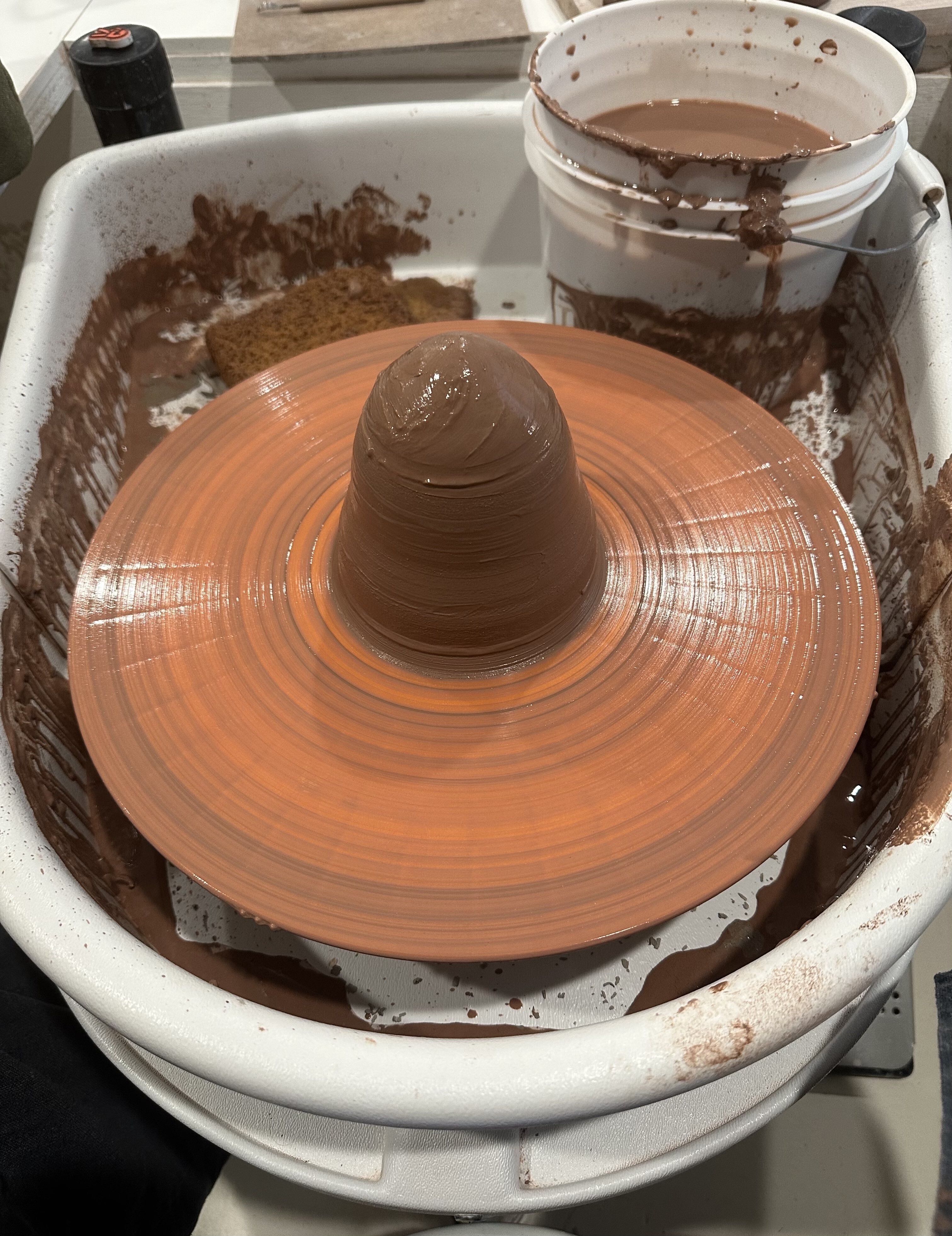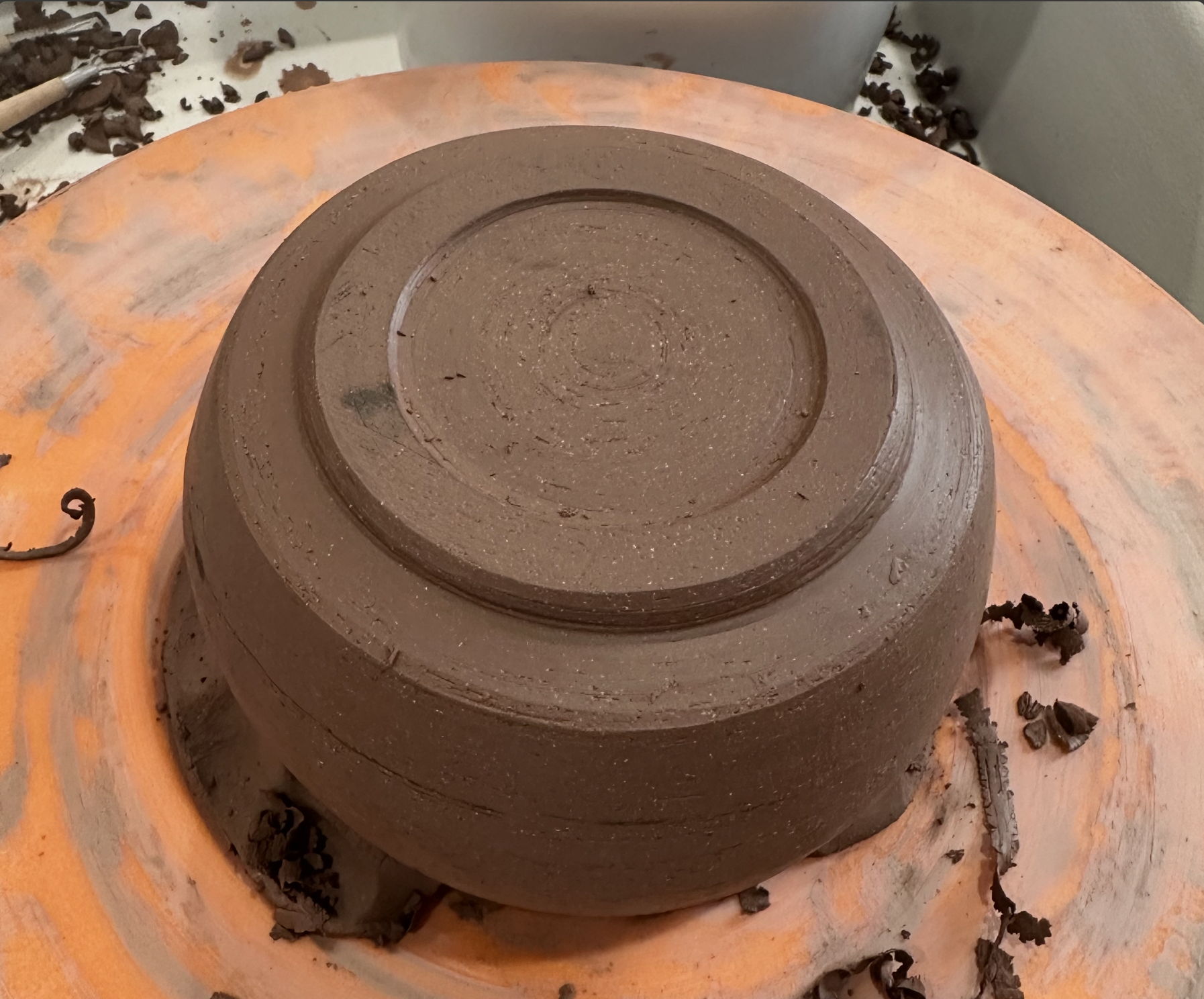Around the time I started my role as a project manager, I decided to look for a relaxing hobby that would help me de-stress. I landed on pottery — which I soon realized was not the relaxing choice I thought it would be. The learning curve was steep, with opportunities to make mistakes and go astray at every turn. And although pottery ended up being difficult and kind of stressful, it was an invaluable experience. Between parallels in the project management processes and the value of play in work, pottery helped me learn to be a better project manager.
The process
Pottery and project management are both very process-focused activities, where a lot of creativity and problem-solving is needed to make a project come to life. There’s always a step to take, and room for improvement, as well as the general fear of collapse. First, let’s talk about the process of pottery and how it relates to project management.
Centering
The first step to pottery is centering the clay on the wheel — essentially, compressing the clay and bringing it into alignment so that it’s ready to be shaped. If this step isn’t done right and the clay is off-center, everything else will be topsy-turvy.
The parallel to a project kickoff is almost too on-the-nose. This is the point in a project’s life that’s all about bringing everyone and their processes together, so that when you progress through the project, you’re starting from a center-aligned goal. And, as in pottery, if this step is rushed it can really backfire further down the line.
Crafting
This is the fun (and very fiddly) part of pottery, when you start to build the walls of the item you’re creating. This is when the project takes shape. It takes a strong idea of where you want to end up to be able to lead the clay to its final form. The challenge here is that the clay often has a mind of its own: adjustments to the speed of the wheel or moisture level of the sponge is enough to make a pot flop over.
Unlike in pottery, often the project manager doesn’t need to get elbows deep in the actual crafting of the project. The manager (or potter) lets the team (or the clay) do what needs to be done, while being there to guide and support the project.
Trimming
After a piece is shaped, it must be taken off the wheel and dried. Then, after the pottery is the right texture (often called “leather hard”), the potter can trim imperfections, remove excess clay, and even out the walls so that the piece is smooth and polished looking. This is also when additional embellishments, such as a handle, can be added.
At first, this part of the process was incredibly frustrating. And its counterpart in project management was just as tedious: crossing the i’s and dotting the t’s in QA, excavating bugs, testing and making sure that everything looks and functions right. But over time it became clear how important this step was in ironing out any potential wrinkles and making improvements to optimize the project.
Finishing
Finally, the piece is bisqued (hardened in a kiln), glazed, then fired in a kiln one last time to complete the piece. Often, the pottery process takes weeks, or even months, to complete.
Learning to jump in and play
One of my favorite parts of pottery is getting to play. As adults, we miss out on opportunities to make a mess, to get up to our elbows in mud. With pottery I can get dirty for the joy of it. I can learn about new clays, glazes, and techniques — and experiment, knowing that failure is part of the process.
As a project manager, I’ve had to make an effort to be less of a perfectionist. In one of my first major projects in this role, I was paralyzed by perfection: I wanted to do everything right all the time, even though that’s not really possible. But the more I got into the project, the more I realized that I had to just dive in and try things out. My team encouraged me to request new tools, play with new processes, and find new ways to display data, which ultimately enabled us to smoothly manage projects for a large, complex client partnership. And, I discovered that by being willing to jump in and try new approaches, I better learn which processes and tools lead to the best outcomes.


Like any skill, pottery and project management both require time, practice, and a willingness to keep learning. My experience with pottery has helped me find the courage to approach my professional work more playfully, embrace new techniques and tools, and show grace when things don’t go perfectly. At HDMZ, we’re encouraged to bring play into our work, and that mindset helps us create smarter, more inspired solutions. When we give ourselves permission to make mistakes and enjoy the process, we can keep evolving with each project.
